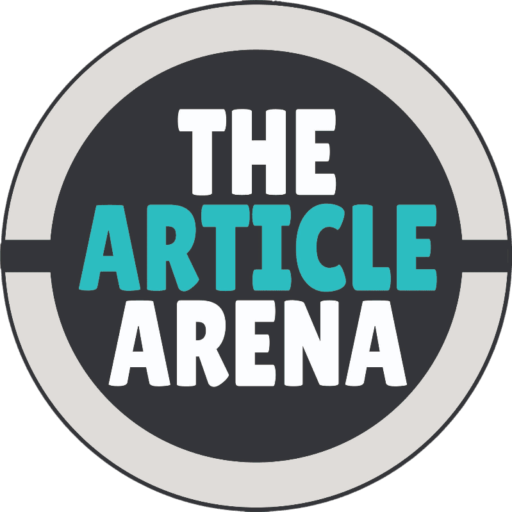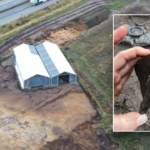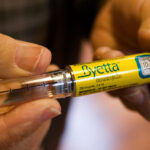Maricruz Salgado was bringing her diabetes below management. Because of a federal program that allowed well being clinics that serve poor folks to purchase medicine at steeply discounted costs, she was capable of pay lower than $75 for all 5 of her diabetes drugs each three months.
However in July, the price of three of these medicine soared. Ms. Salgado, who doesn’t have medical health insurance, out of the blue confronted prices of lots of of {dollars} per thirty days. She couldn’t afford it.
Her physician switched her to cheaper medicines. Inside days of taking one in all them, she skilled dizzy spells so extreme that she mentioned may barely sustain together with her hectic every day schedule as a phlebotomist and an in-home caregiver. By the point she returned to the physician in September, her blood sugar ranges had ticked up.
“We have been in place,” mentioned Dr. Wesley Gibbert, who treats Ms. Salgado at Erie Household Well being Facilities, a community of clinics in Chicago that serves sufferers no matter their potential to pay. “After which all of the medicines needed to change.”
The value hikes on the clinic occurred for a purpose that’s symptomatic of the tangled net of federal insurance policies that regulate drug pricing. In 2024, drug makers lowered the sticker worth of dozens of widespread drugs, which allowed them to keep away from huge penalties imposed by the American Rescue Plan, the Covid reduction package deal handed three years earlier. However that change backfired for low-income folks like Ms. Salgado.
The choice to make these drugs extra inexpensive for giant swaths of sufferers has quietly created one other drawback: a extreme monetary hit to the clinics which might be tasked by the federal authorities with caring for the nation’s poorest folks. These nonprofit clinics function in each state and serve almost 32.5 million folks, or about 10 p.c of the nation’s inhabitants.
“It’s the regulation of unintended penalties,” mentioned Beth Powell, the director of pharmacy at The Facilities, which operates 5 neighborhood well being clinics within the Cleveland space. Ms. Powell mentioned that whereas many shoppers benefited from the businesses’ resolution to decrease costs, “for our of us, that’s not the case.”
Greater than 1,000 neighborhood well being clinics across the nation depend on a decades-old federal program that requires drug corporations to supply them deep reductions.
Underneath the 340B program, as it’s known as, corporations usually promote their brand-name medicine to clinics at a reduction, at 23 p.c or extra off the checklist worth. The identical low cost scheme applies to state Medicaid plans. But when an organization raises a drug’s checklist worth above the speed of inflation, a penalty kicks in, forcing it to supply even deeper reductions to the clinics.
For years, that meant that each time an organization raised a drug’s checklist worth above inflation, neighborhood clinics paid much less for it. Many medicine, together with insulin, basically turned free.
However the American Rescue Plan made a significant change that hit drug corporations with even bigger penalties for elevating costs. In January 2024, corporations that continued to lift a drug’s worth must pay state Medicaid plans each time these medicine have been used, doubtlessly costing the business billions of {dollars}.
“That was a bridge too far” for the businesses, mentioned Antonio Ciaccia, a drug-pricing researcher who advises state governments and employers.
Producers lowered the value of not less than 77 medicine in 2023 and 2024, based on an evaluation by a nonprofit that Mr. Ciaccia leads. The checklist contains extensively used bronchial asthma medicine like Advair and Symbicort, in addition to diabetes therapies like Victoza, which Ms. Salgado used earlier than the change.
As soon as the pharmaceutical corporations lowered their checklist costs, the inflation penalties evaporated. That meant neighborhood clinics needed to begin paying the standard reductions of 23 p.c or extra off the checklist worth — excess of the pennies they used to pay.
“Sadly, the complexities of the U.S. well being care system can scale back entry and affordability for a lot of,” Jamie Bennett, a spokeswoman for Novo Nordisk, which makes Victoza, mentioned in an announcement. “Even once we decrease our costs, too usually folks don’t obtain the financial savings — it is a drawback.” She mentioned the corporate additionally has affected person help packages to make its merchandise extra inexpensive.
David Bowman, a spokesman for the Well being Assets and Companies Administration, which oversees the 340B reductions, didn’t reply to questions on how neighborhood well being clinics have been affected by the lowered drug costs. He mentioned that different current insurance policies, together with directing Medicare to barter the value of medication, had lowered drug prices for low-income sufferers.
Due to a six-month lag in the best way that 340B reductions work, clinics have been hit by the change final July. Some clinics started calling sufferers earlier than their prescriptions expired, providing to change them to cheaper medicines although they often had extra critical unwanted effects. Others determined to cowl the upper out-of-pocket prices, which required dipping into already scarce reserves.
Ms. Salgado mentioned a nurse from Erie known as over the summer time to inform her in regards to the pricing adjustments. Till then, she had paid about $15 for a three-month provide of Victoza, which is injected every day to maintain blood sugar down. After July, the price rose to greater than $300.
After just a few weeks, Ms. Salgado adjusted to the substitute, Byetta, and her dizziness subsided. However the drug have to be injected twice a day as an alternative of as soon as. And Ms. Salgado should now use a particular pharmacy 20 minutes from her home to qualify for the federal low cost on the 2 insulin medicine she was switched to, the results of more and more strict guidelines that corporations are imposing on well being clinics.
Ms. Salgado, who’s 39, mentioned she is decided to keep away from the destiny of her mom, who died of diabetes problems at 54. However maintaining with frequent pharmacy visits and drugs adjustments is hard. “Generally it does get to a degree the place it’s like, I simply don’t need to do that anymore,” she mentioned.
The adjustments are additionally making it tougher for neighborhood clinics to supply different companies.
Underneath the 340B program, clinics purchase the discounted medicine on behalf of their sufferers. When these sufferers have insurance coverage, the clinics can then invoice insurers for the common, larger worth, pocketing the distinction. However now that unfold — the distinction between how a lot they pay for the drug and what insurance coverage will cowl — has dwindled. That has left clinics with much less cash to spend on companies that aren’t in any other case lined by authorities grants or insurance coverage, corresponding to serving to sufferers discover housing.
At Valley View Well being Heart, a community of clinics that serves sufferers in rural Washington, the 340B cash as soon as financed a psychological well being program that employed eight therapists. In September, the clinic halted this system, shedding the therapists.
“It was such an abrupt change for us that it has positively affected our potential to take care of our sufferers the best way that we wanted to,” mentioned Gaelon Spradley, the clinic’s chief govt.
Some sufferers who’ve seen prices go up have certified for patient-assistance packages supplied by drug makers. That was the case for Lorena Sarmiento, one other affected person at Erie Well being who makes use of Lantus, an insulin pen. Final fall, after the 340B low cost modified, she was quoted $490 at her pharmacy — the retail worth for a field of insulin pens. Erie Well being despatched her to a different pharmacy, which helped her join a producer’s coupon that lowered her price to $35 per thirty days.
Medical doctors and pharmacists at a number of well being clinics mentioned such drug-company help packages may be hit and miss. Generally they final for a restricted time or require {that a} affected person reapply frequently. Sufferers usually should be authorized residents of america or have a set handle.
“It’s a prolonged course of, and it’s lots of hoop-jumping,” mentioned Michael Lin, the chief of pharmacy operations at Household Well being Facilities in Louisville, Kentucky.
Ms. Sarmiento and her husband, Luis, spend about $500 per thirty days on her medical wants, together with particular meals, drugs and a glucose monitor. They’re now not going through the best insulin worth, however their prices are nonetheless 10 instances what they have been just some months in the past, once they spent about $10 on three months’ value of insulin.
Mr. Sarmiento mentioned he tries to not complain. “You all the time should look on the nice aspect,” he mentioned. “However these days, that’s been onerous.”








